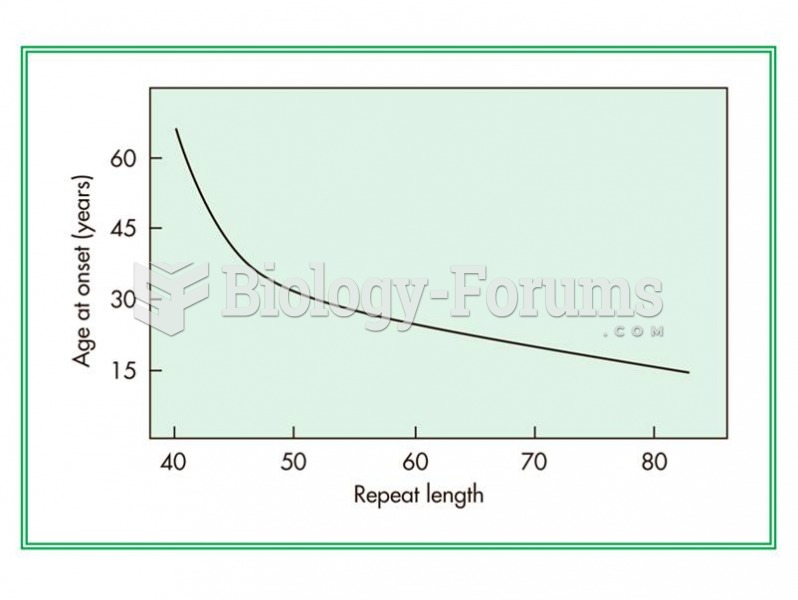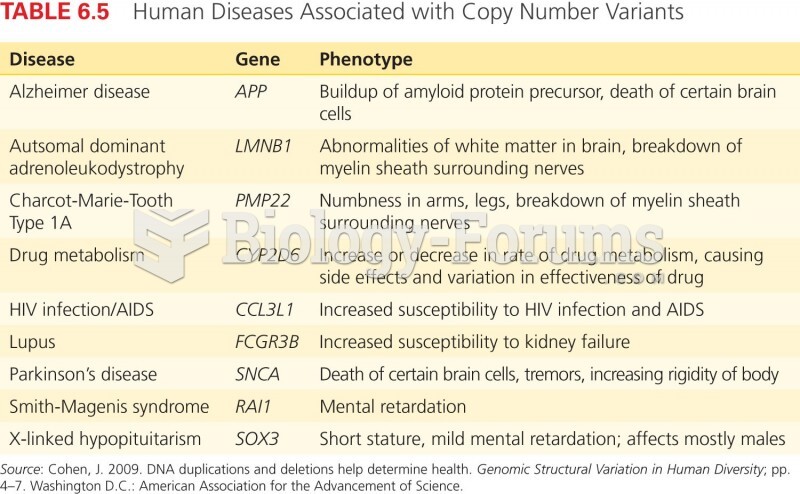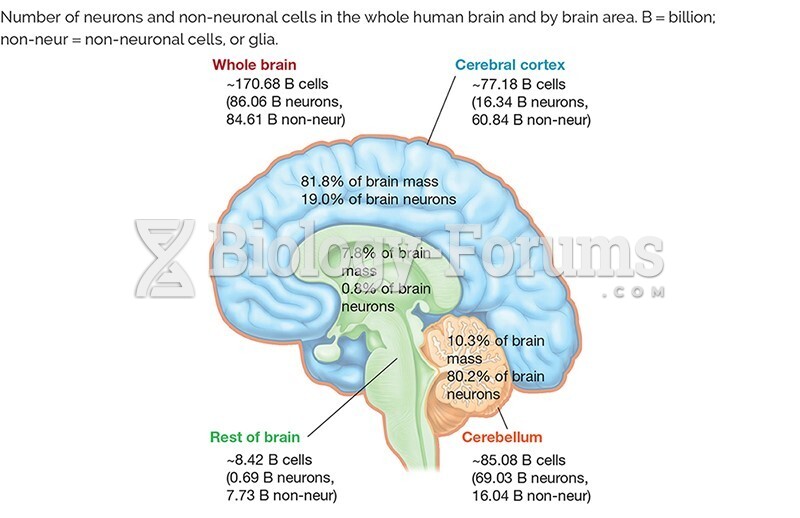|
|
|
In 1886, William Bates reported on the discovery of a substance produced by the adrenal gland that turned out to be epinephrine (adrenaline). In 1904, this drug was first artificially synthesized by Friedrich Stolz.
Automated pill dispensing systems have alarms to alert patients when the correct dosing time has arrived. Most systems work with many varieties of medications, so patients who are taking a variety of drugs can still be in control of their dose regimen.
Between 1999 and 2012, American adults with high total cholesterol decreased from 18.3% to 12.9%
Asthma-like symptoms were first recorded about 3,500 years ago in Egypt. The first manuscript specifically written about asthma was in the year 1190, describing a condition characterized by sudden breathlessness. The treatments listed in this manuscript include chicken soup, herbs, and sexual abstinence.
After 5 years of being diagnosed with rheumatoid arthritis, one every three patients will no longer be able to work.
 Relationship between the number of CAG repeats in a gene and the age of onset of Huntington disease.
Relationship between the number of CAG repeats in a gene and the age of onset of Huntington disease.
 Three possible phylogenies for the australopithecines with Au. anamnesis as the stem ancestor and re
Three possible phylogenies for the australopithecines with Au. anamnesis as the stem ancestor and re





